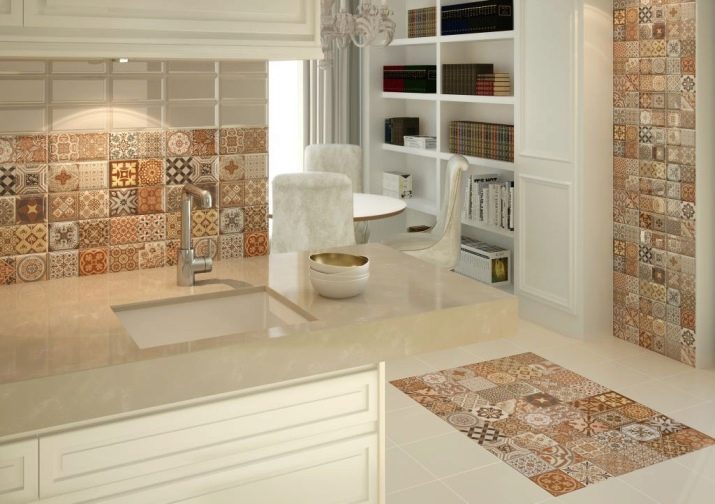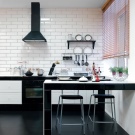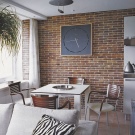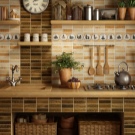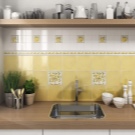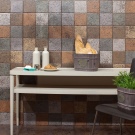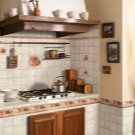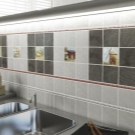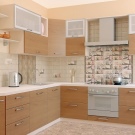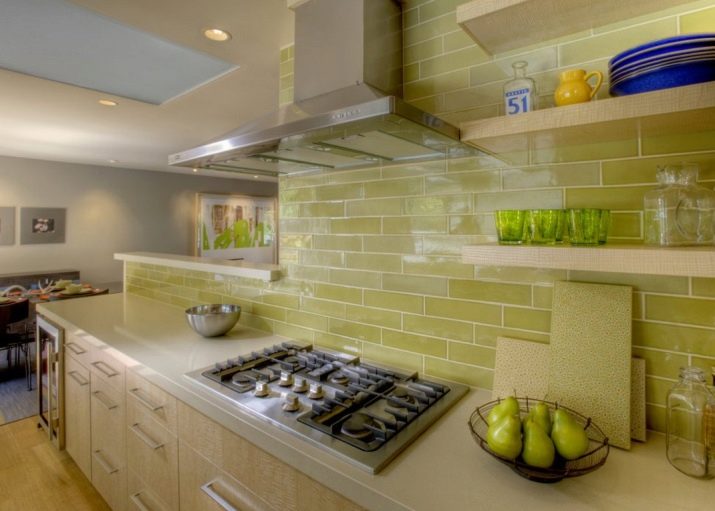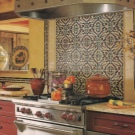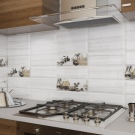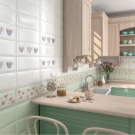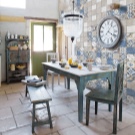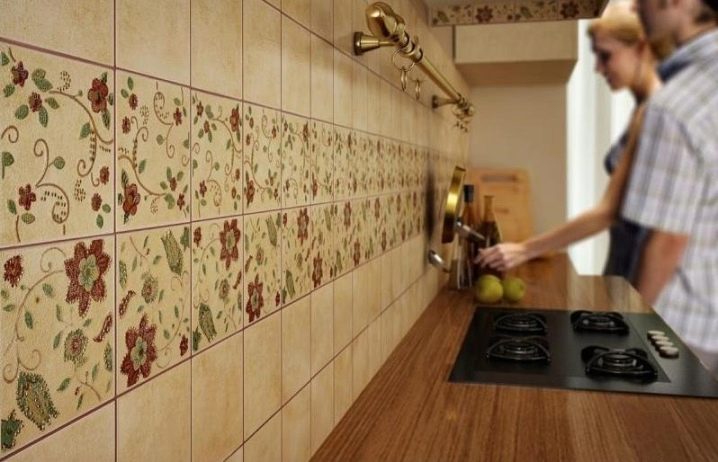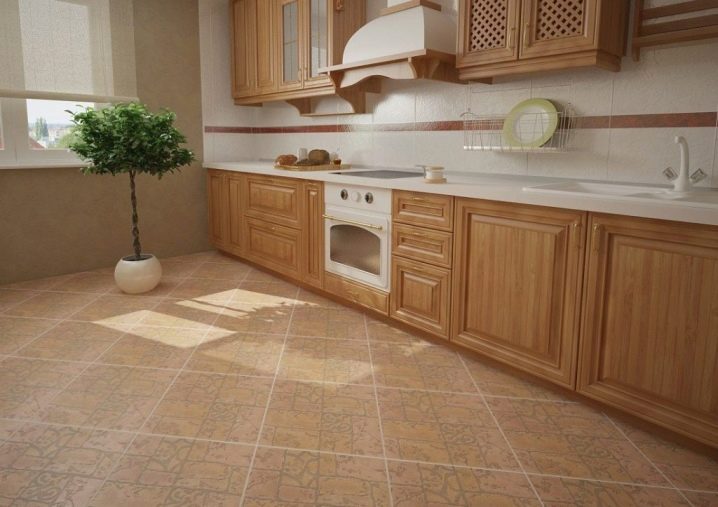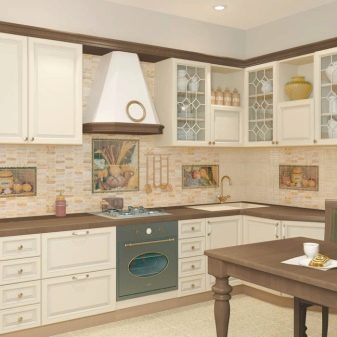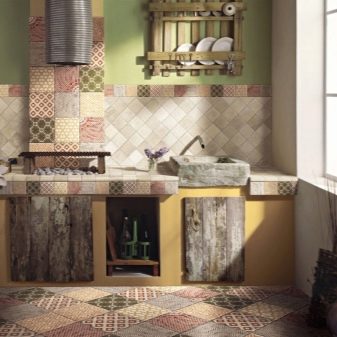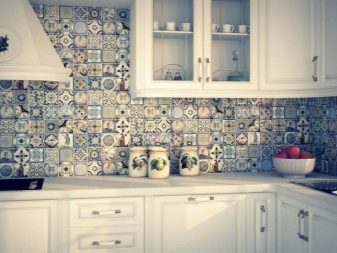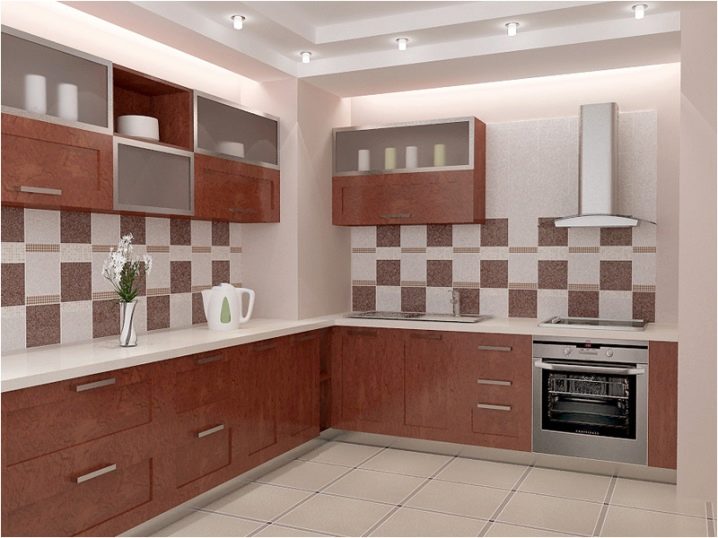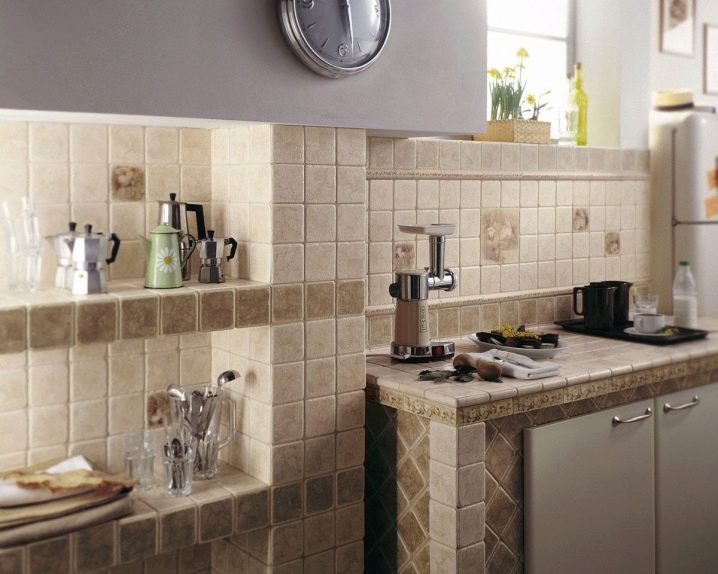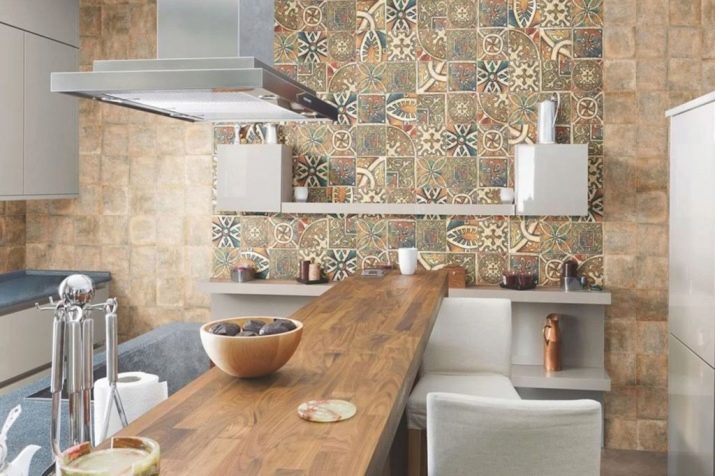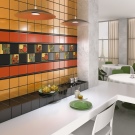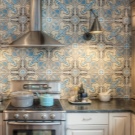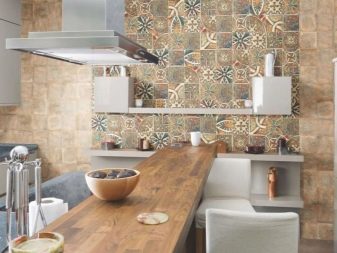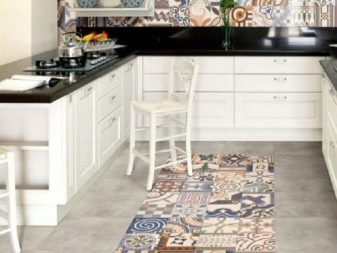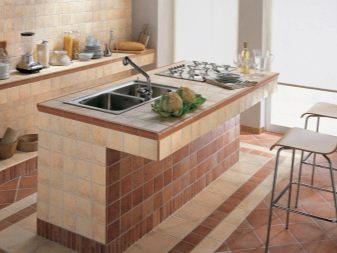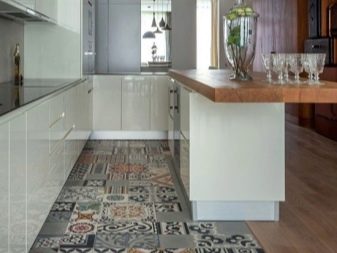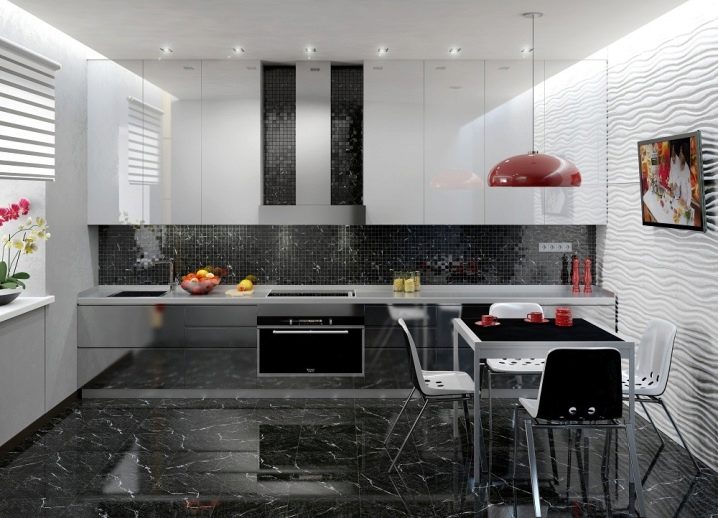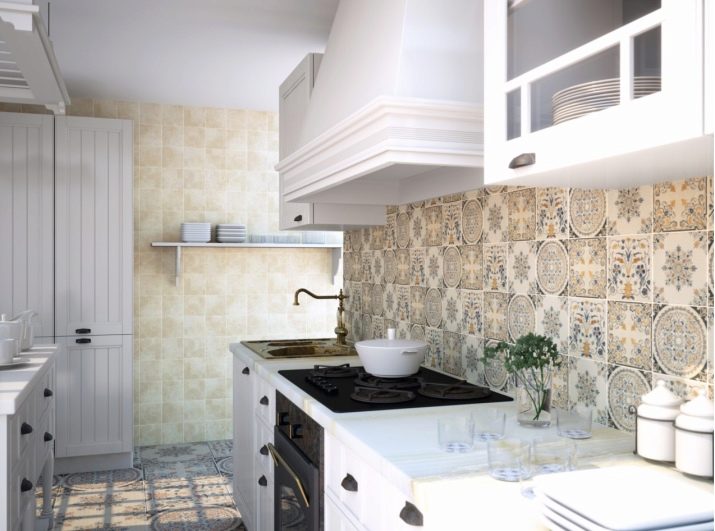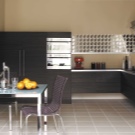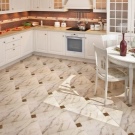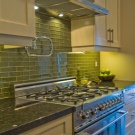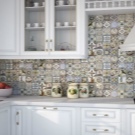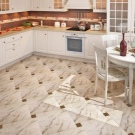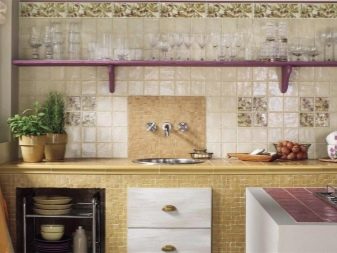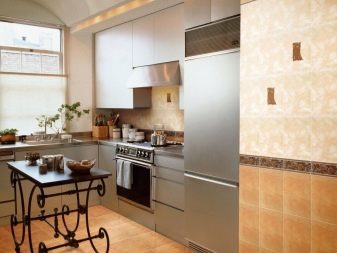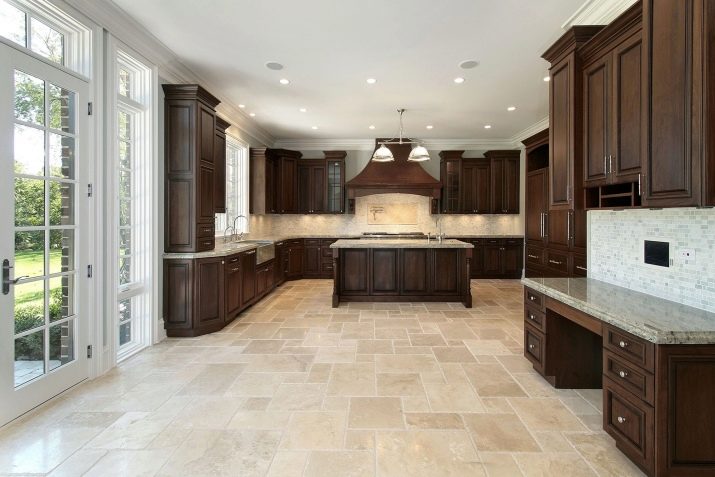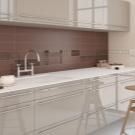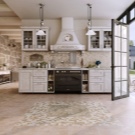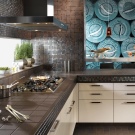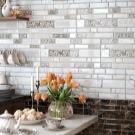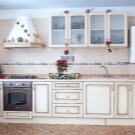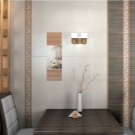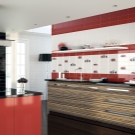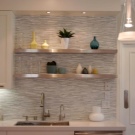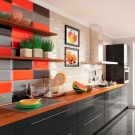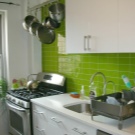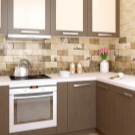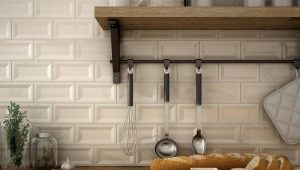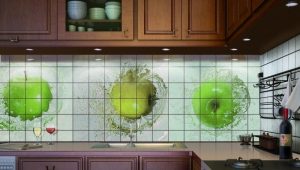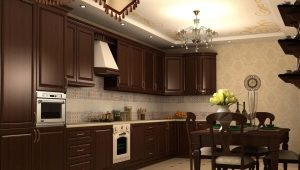Kitchen tile sizes
Facing the kitchen with wall ceramic tiles is the most optimal and time-tested way to make this room the most practical and at the same time comfortable, aesthetic and cozy. And the choice of a special design wall tiles for the kitchen area will allow to give it a unique style, while retaining the necessary functionality.
Ceramic tiles are good because, along with a rich appearance and a wide range of their size, colors and shapes, they are highly water resistant, are not deformed by the effects of grease, water and steam, are not afraid of contact with cleaning chemicals and are resistant to abrasion, impact and contact with hot items, which is especially valuable when arranging the kitchen. It is pleasant and easy to care for her.
How to choose
Choosing a tile for the kitchen, it is important to clearly understand what kind of result you need to get - after all, changing the wrong tile as easy as re-gluing the wallpaper will not work.Ceramic tiles usually occupy a large area of the kitchen area and often become its main accent. And therefore, even contrasting, the wall tile should be combined with the one that is laid on the floor, and the one that the working apron and countertop revets, and with all the furniture and accessories in the kitchen. Please note: do not just look like or match in color, but blend well!
In the design of the kitchen interior, an important role is played by the shape, size, color, texture, style and, of course, the quality of the selected tile. For wall cladding, preference is usually given to glazed (size 15x15), since matte visually narrows the room, and glossy adds space. The rectangular wall tile has a certain optical effect - it is laid vertically, as if it makes the kitchen higher, and glued horizontally longer.
The decor of the kitchen in a fairly democratic modern style presupposes the presence of surfaces lined with smooth, smooth, glossy ceramic tiles of standard size or large floor, made "under stone, leather or wood." The kitchen in modern style allows for the presence of matte floor and mosaicwall tiles, and high-tech in the kitchen area prefers tiles “with a twist” - metal, “under silver”, gold or platinum, with holography, interspersed with crystals or “under brick”. On the floor of the kitchen in the style of Provence or Country are quite logical plates, imitating cobblestones, rubbed stone slabs or old marble, and on the walls and kitchen apron - a mosaic with natural motifs or hand-painted antique tiles. The Mediterranean style of the cuisine is shaped mainly by the colors and contrasts used in the ceramic tiles and the painted mosaic - bright blue, white or green-yellow, giving the atmosphere a sunny mood. Well, the strict black and white interior of the kitchen will refresh and revitalize the photo tile with bright original plots or the whole wall stylized as an old stonework.
Quality ceramic tiles must necessarily have all the properties that play a decisive role in its choice for the arrangement of the kitchen area:
- Moisture resistance - a standard increase in weight in a wet room should not exceed 1%, and if the indicator stays within 0.03%, then the tile is of high quality and suitable for kitchen equipment.
- Stress resistance - manufacturers and suppliers of ceramic tiles must necessarily indicate in the certificates expert data on their stability under mechanical shocks and thermal effects, as well as upon contact with abrasive and chemical substances.
- Standard - it is indicated by the marking of the variety on tiled packaging (the first, with red marking, - no more than 5% deviations from the standard in the entire consignment of goods, the second, with blue marking, - within 20%, and the third, marked in green, - discrepancy over 25%). If the tile is not marked, it does not mean that you have a premium product - you must check the manufacturer’s integrity at least visually.
Ceramic tiles of type AA are preferred for facing the kitchen walls and decorating the apron, where the package shows a palm. The optimum thickness is 4 millimeters. The surface must be covered with a protective layer of enamel and not have a porous structure - so that it repels water well and is easily cleaned of grease and dirt (including using chemical detergents).
For reliable coverage of the tabletop, especially if you plan to cook every day,ordinary tile does not fit - you need ceramic tiles of the first or, in extreme cases, second class, besides with increased wear resistance. It will relieve problems when interacting with cleaning agents, will not worry about the high temperature and frequent friction on the countertop dishes, kitchen appliances and equipment, as well as prevent scratches from a knife or other sharp objects.
Durable and durable floors in the kitchen are obtained with ceramic tiles, on the packaging of which a foot is shown. The minimum thickness is permissible in 5 millimeters, and indicators of durability, wear resistance and resistance to the effects of chemicals should be maximum. Others simply cannot cope with the intense loads on the flooring, combined with the sudden temperature changes and the excessive humidity typical of the kitchen area. In addition, for the kitchen floor is better to choose a matte tile, which is safer than slippery glossy.
Species
Tiles for cladding - a whole collection of various groups of finishing ceramic materials, which differ from each other by the method of manufacture, the method of applying and fixing the pattern, the shape of the product, size and application.
Tile is the most famous type of glazed ceramic tiles with a rich variety of colors, textures and textures, which is made by burning mixed in a certain proportion of sand, minerals and clay. The most common size of wall tile is 200 x 300 millimeters, the other standard tile formats vary from 300 x 900 to 75 x 150 millimeters, and thickness ranges from 7 to 9 millimeters.
- Square When decorating the walls of kitchen rooms, white matte square tiles are often used, measuring 10x10, 15x15, 20x20 and 30x30 centimeters.
- Rectangular. Rectangular glossy tiles with a size of 10x20, 10x30 or 20x30 centimeters are also among the most popular wall coverings for the kitchen.
Standards
Floor tiles in thickness can be from 8 to 14 millimeters, and in format (in length and width) - from 150 x 150 to 1000 x 1000 millimeters, with the most popular format of 300 x 300 millimeters. As already found out, they are not suitable for laying on the kitchen floor, but if you wish, you can interestingly revet the walls.
The clinker is a ceramic tile, made by an extrusive method with the use of extrusion through a special complex geometric shape and single firing in a high-temperature furnace.Due to this, clinker tiles acquire high rates of frost resistance, water resistance, wear resistance and immunity to the aggressive effects of detergents, and therefore are widely used for the manufacture of drains, connecting structures and pool stages, as well as during their lining. In addition, they are used to cover walls, stairs and floors when building various industrial and sports facilities and when facing building facades (clinker tiles “under brick”).
Cotto - charming, like old Italian unglazed tiles of warm terracotta shades of natural red clay (brick, yellow, brown, pink, red), made using extrusion and kilned in a 1000-degree kiln. Cotto tiles are used for interior decoration, because after laying they need a protective hydrophobic coating, and therefore they can be found more likely in facing the floor of museums or ancient buildings than in facing of facades. They are available octagonal, hexagonal, rectangular or square cotto with dimensions of 40 x 60, 30 x 30, 25 x 25 and 20 x 40 centimeters.
Big sizes
Porcelain stoneware - heavy-duty vitrified (glazed and unglazed) tiles with ultra-low water absorption (close to zero) and the highest frost resistance, moisture resistance and wear resistance. They are made by dry pressing under high pressure in combination with single roasting and high temperatures. Due to its homogeneity and high density, often even natural stone is superior to its characteristics. The undoubted hit is ceramic granite tiles with a size of 30x30 centimeters, although the rest of the standard formats (and large sizes of 120x180 and 100x100 centimeters, and the smallest ones of 5x5) are also in demand.
Making an apron
Majolica is a decorative look of exquisite ceramic tiles with a colored porous base (the most famous and valuable is Italian majolica). It is made according to a special old technology: experienced artists, before firing, manually paint each tile in a special way directly on the raw colored glaze. As raw materials, carbonate, sand, a certain type of clay and iron oxide are mixed in certain proportions, which ultimately awards the majolica with a traditional pinkish muted shade.
Two firing steps take place: to fix the tile body first, and then for the enamel applied on it, due to which the majolica turns out shiny, perfectly flat, without cracks and bubbles on the surface. Any inaccuracy in such scrupulous and virtuoso work leads to damage to the product, and therefore the cost of tiled majolica is very high. The most running sizes are 20 x 20, 15 x 20 and 15 x 15 centimeters.
It is majolica, as well as ceramic tile "under the brick" is more often used to design the apron of kitchen areas.

